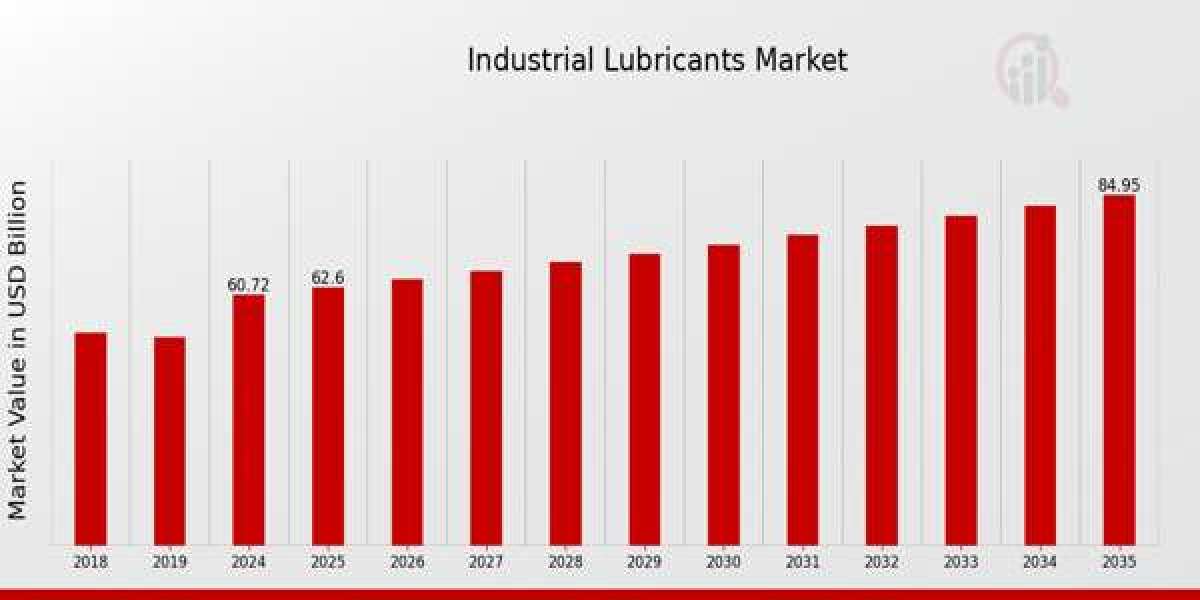The industrial lubricants market plays a critical role in maintaining machinery efficiency, reducing downtime, and ensuring seamless industrial operations worldwide. Industrial lubricants are essential fluids that help in reducing friction, wear and tear, and excessive heat generation during mechanical processes. They include engine oils, hydraulic fluids, compressor oils, gear oils, metalworking fluids, and general-purpose oils that are widely used across manufacturing, automotive, power generation, construction, mining, marine, aerospace, and other heavy industries.
Globally, industrial lubricants demand has been witnessing steady growth due to increasing industrialisation, rapid infrastructure development, and expansion of manufacturing sectors in developing economies. Asia Pacific remains the largest consumer market due to the robust presence of manufacturing hubs in China, India, Japan, and Southeast Asian countries. These regions drive significant consumption of lubricants in metalworking, automotive component production, construction equipment, and textile machinery applications.
Another key growth factor is the expanding automotive industry that requires large volumes of lubricants for engine assembly plants, stamping units, gear manufacturing, and component machining. Engine oils and metalworking fluids are highly used to ensure clean cutting surfaces, corrosion resistance, and optimal temperature control during machining processes. With the rising adoption of automated machinery, CNC machines, and high-speed operations in metal fabrication, the need for advanced lubricants with superior thermal stability, anti-wear, and load-carrying capabilities has surged.
Moreover, the power generation sector, including wind turbines, hydroelectric plants, and thermal power stations, extensively consumes gear oils, turbine oils, and hydraulic fluids for turbine bearings, gearboxes, and hydraulic control systems. As global electricity demand rises and renewable energy installations increase, the use of industrial lubricants in turbines and supporting mechanical systems continues to expand.
Industrial lubricants manufacturers are focusing on developing high-performance synthetic and semi-synthetic formulations to cater to the demand for longer drain intervals, reduced maintenance costs, and extended machinery life. Synthetic lubricants are gaining traction due to their excellent oxidative stability, low volatility, enhanced viscosity index, and ability to perform efficiently under extreme temperatures. They are preferred in high-speed and heavy-load applications such as mining equipment, steel rolling mills, and precision machining units.
In recent years, environmental regulations have become stringent, urging manufacturers to innovate bio-based and eco-friendly lubricants. These lubricants are biodegradable, non-toxic, and derived from vegetable oils or renewable esters, thus reducing environmental impact and ensuring compliance with emission norms and disposal standards. Industries are gradually adopting such green lubricants to enhance their sustainability image and reduce hazardous waste management costs.
Technological advancements have led to the development of multifunctional lubricants with anti-rust, anti-foaming, extreme pressure, and detergent properties integrated into single formulations. This trend is reducing inventory management complexity and operational costs for industrial users, as a single lubricant performs multiple protective functions within machinery.
The market also witnesses demand for specialty lubricants that operate in niche applications such as food-grade lubricants in food processing and packaging, electrically insulating oils in transformers, and refrigeration oils in cooling systems. Food-grade lubricants are gaining market share due to strict food safety regulations mandating the use of NSF-approved or H1/H2 category lubricants to avoid contamination risks.
In terms of distribution, industrial lubricants are supplied through direct sales, authorised distributors, and oil marketing companies. Large manufacturing firms generally procure lubricants in bulk directly from oil companies to ensure consistency and technical support, while medium and small enterprises rely on distributors for availability and flexible payment terms.
The COVID-19 pandemic affected the market temporarily due to supply chain disruptions, shutdown of manufacturing facilities, and reduced industrial activities. However, as industries reopened and infrastructural investments revived, the market regained momentum with gradual growth in demand for lubricants across sectors.
Key players operating in the global industrial lubricants market are focusing on mergers, acquisitions, and capacity expansions to strengthen their production capabilities and regional presence. They are also investing in R&D to develop advanced formulations that provide superior lubrication performance, energy efficiency, and machinery protection in demanding environments. Customised lubricants for client-specific processes, machinery compatibility, and temperature conditions are being introduced to enhance operational efficiency.
Looking ahead, the industrial lubricants market is poised for stable growth supported by rapid urbanisation, rising investments in infrastructure, growing energy needs, and increasing automation across manufacturing units. However, the market also faces challenges such as volatility in crude oil prices affecting base oil costs, environmental concerns related to lubricant disposal, and intense competition among global and regional suppliers.



